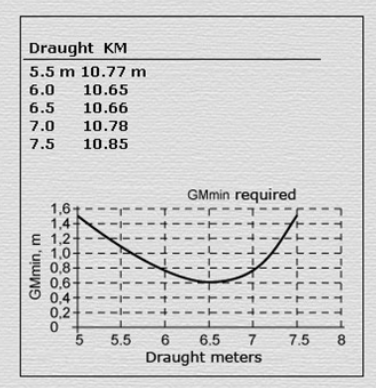Welcome to the website where you can pass online the CBT test on the subject «Stability II, Damage Stability (CD Module 0061)». Practice like this will help you as a marine specialist improve your knowledge with the help of online studying and appraisal practice. CBT based on practical information and marine specialists experience.
CBT tests developed for evaluating seaman basic knowledge by Seagull Company (rebranded as «OTG»), is an evaluating online-tool, used for revealing any professional preparation needed in specific fields of knowledge, defined by STCW.
CBT tests have proven themselves as good tools for the selection and recruitment process, as well as advancing the level of knowledge of the current officers and crew. Ocean Technologies Group use various subjects for question creation, which includes:
- Crowd and Crisis Management;
- Integrated Navigation System (INS);
- Ballast water management;
- Handling and Stowage;
- Vessel operation management and safety;
- Marine engineering;
- Maintenance and repair, etc.
Current test contains Seagull CBT questions on the subject «Stability II, Damage Stability». Those questions can be used for competence verification specialist capable of preventing accidental situations related with transporting safety, or also for self-examination.
«Stability II, Damage Stability» subject includes theoretical and practical information about advanced training for work on any type of vessel. The test evaluates knowledge of intact and damage stability principles for various vessel types. It includes theoretical questions on stability criteria, regulations (e. g., SOLAS), and damage control procedures. Practical scenarios assess the ability to calculate stability parameters after flooding or hull damage. Questions may cover watertight compartments, subdivision and the impact of free surface effect. The test examines understanding of IMO requirements for stability in damaged conditions. Candidates must demonstrate proficiency in using stability software or manual calculations for emergency situations. Case studies simulate real-life damage scenarios, requiring corrective actions to maintain vessel safety. Successful completion ensures competence in assessing and managing stability risks on passenger, cargo and special-purpose ships.
On this site Crew Evaluation System Test on the subject «Stability II, Damage Stability» contains 13 questions you need to answer with no possibility to go back to previous question. Therefore, we recommend carefully reading each question and making decision with no hurry. In case you have some difficulty answering, you have also possibility to request a hint.
Choose the regime, in which you want to pass CES test:

Use the search below to find question.
Amount of questions: 13.
Right answers marked with this sign .
Did you find mistake? Highlight and press CTRL+Enter


